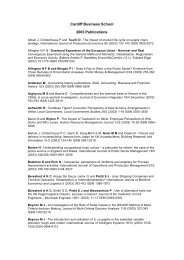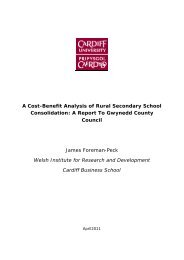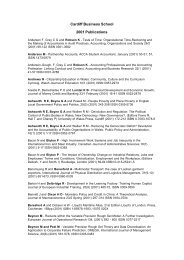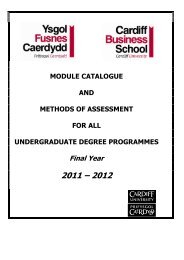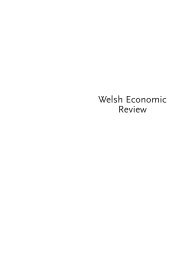Revisiting the Great Moderation using the Method of Indirect Inference
Revisiting the Great Moderation using the Method of Indirect Inference
Revisiting the Great Moderation using the Method of Indirect Inference
You also want an ePaper? Increase the reach of your titles
YUMPU automatically turns print PDFs into web optimized ePapers that Google loves.
We estimate a VAR for each period and we <strong>the</strong>n ask what candidate DSGE models could<br />
have generated each VAR. Having established which model comes closest to doing so, we<br />
<strong>the</strong>n examine how <strong>the</strong> dierence between <strong>the</strong>m accounts for <strong>the</strong> <strong>Great</strong> <strong>Moderation</strong>. Since<br />
<strong>the</strong>se models embrace <strong>the</strong> ones put forward by <strong>the</strong> authors who argue that policy regime<br />
change accounts for it, we are also able to evaluate <strong>the</strong>se authors' claims statistically.<br />
Thus we bring evaluative statistics to bear on <strong>the</strong> authors who claim policy regime change,<br />
while we bring identication to bear on <strong>the</strong> authors who use SVARs.<br />
We describe our methods in detail below. But rst we discuss <strong>the</strong> empirical evidence<br />
from single equation estimates for <strong>the</strong> Taylor Rule.<br />
3 Taylor Rules, Estimation and Identication<br />
Taylor (1993) suggested that a good rule for monetary policy would set <strong>the</strong> Federal funds<br />
rate according to <strong>the</strong> following equation:<br />
i A t = A t + 0:5x t + 0:5( A t ) + g (1)<br />
where x t is <strong>the</strong> percentage deviation <strong>of</strong> real GDP from trend, A t<br />
is <strong>the</strong> annual rate <strong>of</strong><br />
ination averaged over <strong>the</strong> past four quarters, with ination target and real GDP<br />
growth rate g both set at 2 percent.<br />
Known as <strong>the</strong> original `Taylor Rule', equation (1) was found to have predicted <strong>the</strong><br />
movement <strong>of</strong> actual Fed rates well for much <strong>of</strong> <strong>the</strong> period from 1987 until <strong>the</strong> early 1990s.<br />
This success convinced many economists that <strong>the</strong> Fed's policy at <strong>the</strong> time could be<br />
conveniently described by this equation. A number <strong>of</strong> variants have also been proposed;<br />
for example, one with policy inertia as in Clarida, Gali and Gertler (1999):<br />
i A t = (1 )[ + ( A t ) + x x t ] + i A t 1 (2)<br />
with showing <strong>the</strong> degree <strong>of</strong> `interest rate smoothing'. O<strong>the</strong>rs have introduced backward-<br />
7



